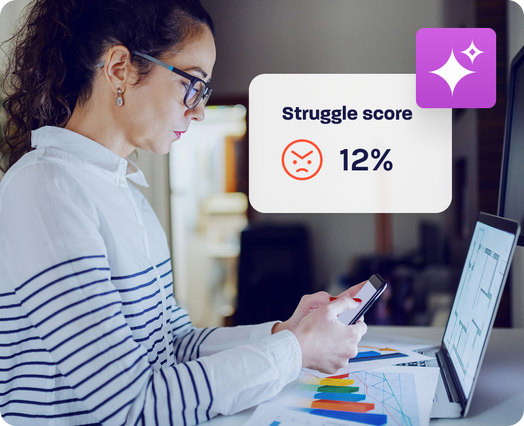
The number 1 reason digital campaigns fail and how to avoid it
In mountaineering, collaboration is everything. Take summiting Mt. Everest, for example—numerous expedition members, each with different strengths and experience levels, must come together to make smart decisions about the ascent route, when to reassess a situation and when it’s best to turn back. Working together is the only way to reach the summit safely. Like mountain climbing, collaboration on digital campaigns is what the Stanford Graduate School of Business terms a “conjunctive” task.
These are tasks that require cooperation of all parties involved to make the best decisions and achieve high-value outcomes. About 90% of brands agree that communication, sharing data and success metrics, and mutual goals are essential to digital customer engagement. Yet less than half of brands agree that they’ve achieved collaboration on digital CX, which Gartner says is essential to improving customer retention and growth.
Collaboration is essential for digital campaigns
One of the major causes of digital campaign failure is the inability to share data and work from common information. Engineering, product managers, marketers, data analysts and contact centers all use their own systems, like Adobe Analytics, Dynatrace, Medallia and Salesforce, to name a few. With so many data sources and insights, it’s no wonder that it’s extremely difficult to prioritize projects and share insights between teams—what one team views as a major issue may not even be visible to another.
To resolve this, enterprises need a single platform that drives collaboration and creates a common language that gets all of the stakeholders who are tasked with driving digital CX on the same page.
Case study in collaboration
Consider a situation in which a financial services firm wanted to encourage customers to download its app by offering a special rate for loans under $20,000. The firm used a single, unified digital CX platform, and here is how the digital campaign played out:
The digital analyst defined and launched the promotional campaign centered on getting customers to use the app. With Glassbox’s Augmented Journey MapTM and tagless capture gathering insights on 100% of sessions and 100% of events in each session, the analyst could see exactly how customers moved through the campaign’s screens. If customers were struggling, the analyst could quickly see where and why struggles were occurring. The analyst found one issues in which an earlier screen didn’t make the terms of the special rate clear, causing customers to struggle on the loan selection screen because they were choosing loans over $20,000.
At the same time, engineering was alerted to the high struggle rate on the loan selection screen and quickly drilled down to see what was causing the problem from a technical perspective. In this case, when customers entered the wrong loan amount, it caused AJAX call errors that prevented the screen from loading properly on the customer’s device, leading to abandonment. Both engineering and analyst teams were able to see the source of the error and how to resolve it together. Artificial intelligence played an essential role at this stage by identifying the monetary impact of the error, so both teams understood how quickly it needed to be addressed and its impact on campaign ROI. To ensure the issue wasn’t happening in other areas, the analyst was able to study the entire Augmented Journey Map and measure whether the anomaly occurred again or on other journeys.
Some customers that experienced this issue called the contact center for help, and with real-time session replays, customer service agents could view exactly what customers were experiencing as it was occurring. Agents were able to swiftly resolve issues while they were on the phone with customers.
The product owner examined the differences in customer journeys between those who signed up for the special rate loan and those who didn’t. Using intelligent visualization and reporting, the product owner found that customers who successfully completed the loan application reviewed all of the loans offered by the financial services firm. So the product owner and engineering then worked together to introduce a new capability that displays the spectrum of available loans to customers, increasing the campaign’s success rate and potentially unlocking new revenue opportunities on larger loans.
Collaboration is a force multiplier that enables organizations to deliver frictionless digital journeys by closing the gap between the CX they’re able to deliver and the CX customers want. Effective cooperation requires the right technology that empowers digital CX stakeholders to work together, just as a mountaineering team needs to in order to reach the summit. To learn more about how to drive collaboration on digital CX, read our white paper, Digital Customer Journey Mapping in Today’s World.








